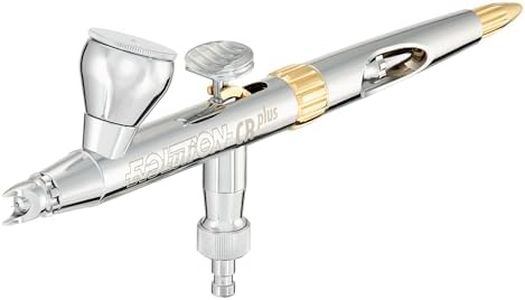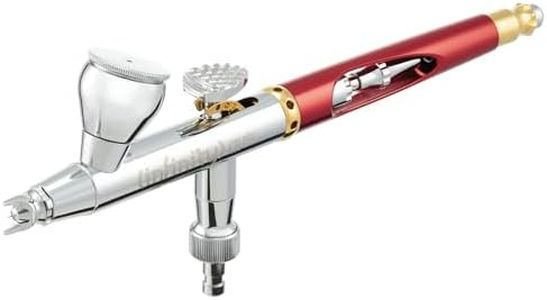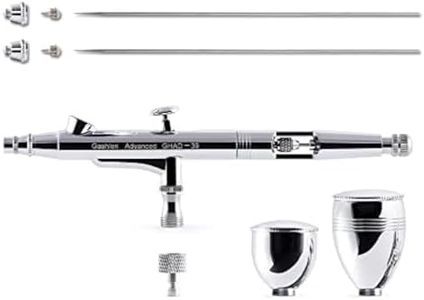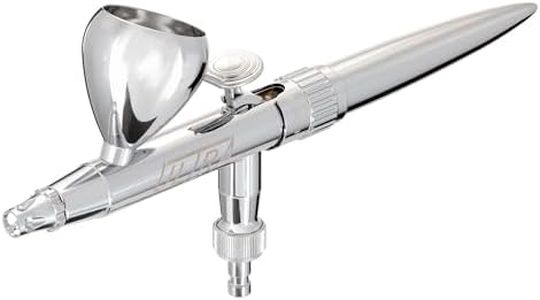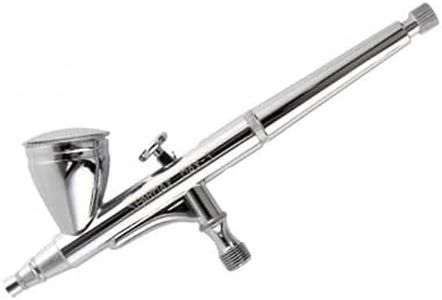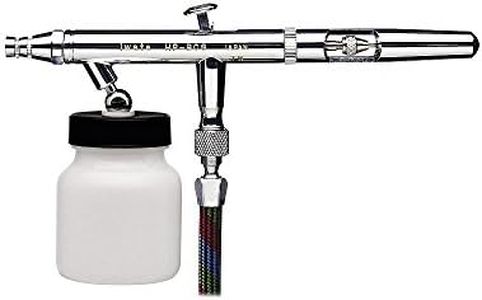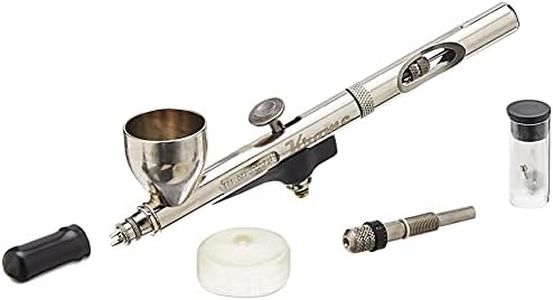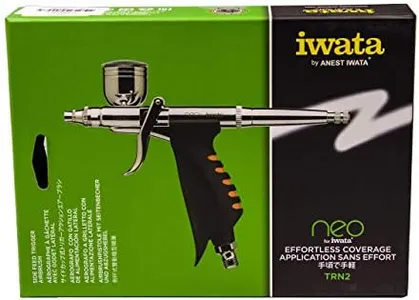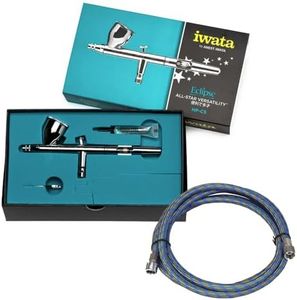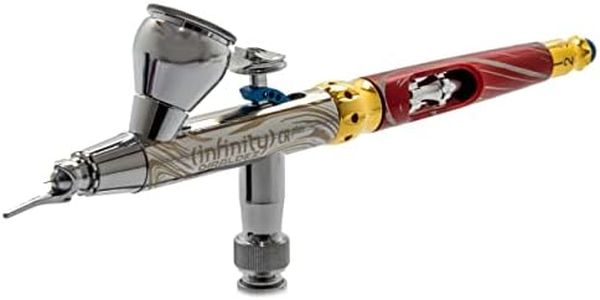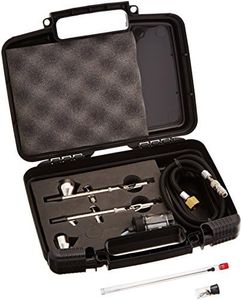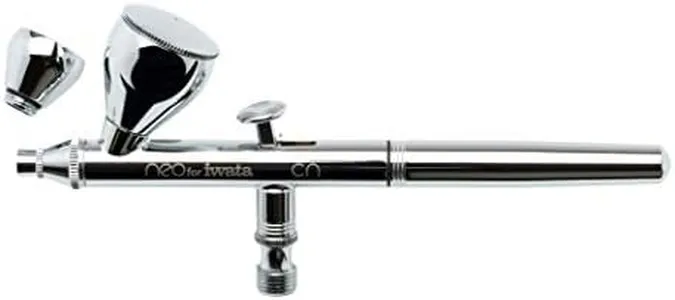We Use CookiesWe use cookies to enhance the security, performance,
functionality and for analytical and promotional activities. By continuing to browse this site you
are agreeing to our privacy policy
10 Best Airbrush Guns
From leading brands and best sellers available on the web.By clicking on a link to a third party's website, log data is shared with that third party.
Buying Guide for the Best Airbrush Guns
Choosing the right airbrush gun can transform your creative projects, whether you're into art, makeup, model making, or automotive detailing. The key is to match the tool's features to the tasks you plan to accomplish. Before you purchase, think about the type of work you'll be doing, the level of detail required, and how comfortable you are with handling and cleaning the equipment. Familiarizing yourself with the main specifications will help you choose an airbrush that feels right for your needs.Feed TypeThe feed type refers to how paint enters the airbrush, either gravity, siphon, or side feed. Gravity feed uses a cup on top, relying on gravity to pull paint into the gun, making it great for fine detail work and lower air pressures. Siphon feed uses a bottle or jar underneath and is better for larger coverage at higher pressures. Side feed has a cup on the side and offers a compromise between the two. Choose gravity feed for detailed, small projects; siphon feed if you plan to spray large areas or more viscous paint; and side feed if you want flexibility and easy cup changes.
Action TypeAction type describes how the airbrush responds to your input, with single-action and double-action models. Single-action airbrushes spray a preset mixture of air and paint when you press the trigger—easier to use, ideal for beginners or broad coverage. Double-action airbrushes let you control air and paint flow separately by pressing and pulling the trigger, which allows for much greater control and detail but requires a bit more practice. If you’re aiming for basic tasks, single-action might be enough, but for precise, artistic spraying, double-action is the better choice.
Nozzle and Needle SizeThis spec tells you the size of the openings through which paint is sprayed, usually measured in millimeters. Smaller sizes (around 0.2–0.3 mm) are best for fine lines and delicate work, while larger sizes (0.5 mm or more) are suited for broader coverage or thicker paints. Consider what kind of lines and effects you need—choose smaller for intricate projects (like miniatures or fine art), and larger for backgrounds or when using heavier paints such as metallics.
Build MaterialAirbrush guns are often made from metals like brass or stainless steel, and sometimes have parts made from plastics. Metal bodies are generally more durable and provide a premium feel, making them suitable for frequent use. Lightweight models may be easier to handle for longer periods. If you value a durable, long-lasting tool and plan to use it often, opt for metal construction; if you need something lighter for occasional use, plastics may suffice.
Ease of CleaningAirbrushes need regular cleaning to perform well, so ease of cleaning is important. Some models have fewer parts and are designed to be taken apart and cleaned quickly, while others are more complex. If you want a low-maintenance experience or are new to airbrushing, look for an airbrush with simple disassembly and minimal small parts. Those tackling many different colors or paints will especially benefit from a model that’s easy to clean.
Compatibility with CompressorsAirbrushes operate with air compressors, and not all guns are suited for every compressor type. Some require higher pressures, while others work with smaller, quieter compressors. Pay attention to the pressure and airflow (measured in PSI and CFM) that your airbrush requires. Make sure your choice matches your available or intended compressor and the kind of work you want to do—low pressure for detail, higher for coverage.
